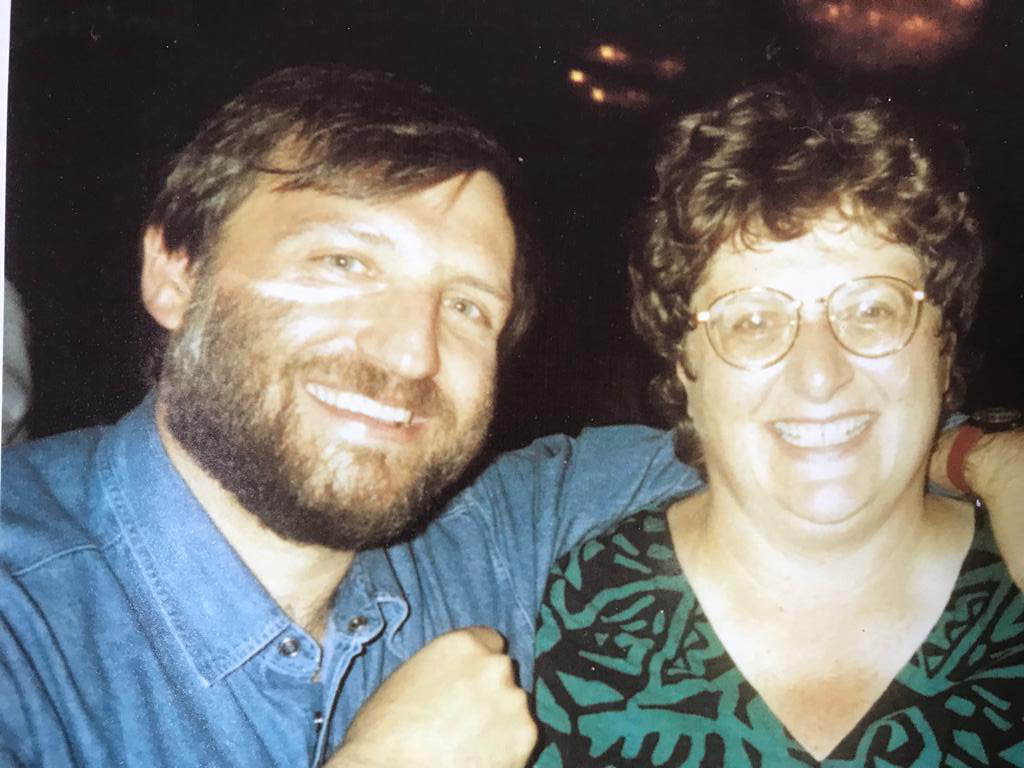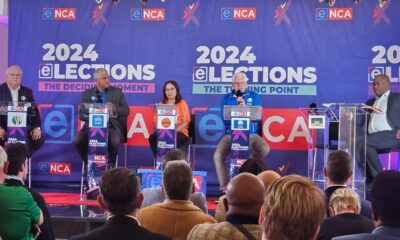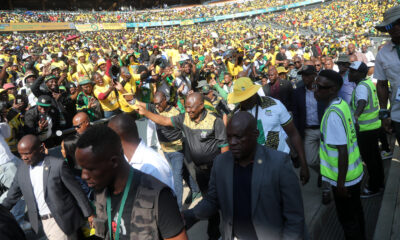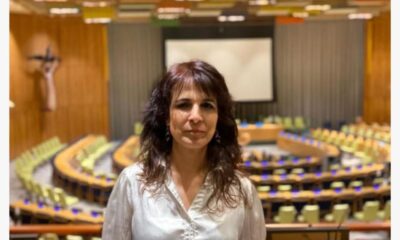
Featured Item

“Idealistic, selfless, committed” – ANC’s early promoters recall the 90s
The African National Congress (ANC) is heading towards a political showdown at its national elective conference in a few weeks. It seems the image of this liberation-movement-cum-political-party has strayed substantially from what it was in the early 1990s.
In February 1990, President FW de Klerk surprised the world by unbanning the ANC and releasing Nelson Mandela from prison. To many, the ANC was nothing more than an organisation of Marxist terrorists, bent on nationalisation, violence, and destroying the country. The ANC desperately needed to get South Africans to know more about it. So, it turned to a couple of young Jewish advertising executives to get its messages across.
Louis Gavin and Julian Ovsiowitz ran Applied Marketing Communications (AMC), part of the TBWA Hunt Lascaris group. Gill Marcus called AMC one day, and said the ANC needed an advertising agency to assist it to build knowledge about the organisation.



“We were branding the ANC for a South African public that had been denied knowledge about it for 30 years,” said Pallo Jordan, then head of the ANC’s information and communications department. Meeting the first groups of white South African businessmen and intellectuals in the late 1980s in Lusaka, “I was struck by the depth of sheer ignorance white South Africans were living under,” he said. “The ANC was the bogeyman, die swart gevaar [black danger]. They had never gone further. If educated professionals thought this, what about the average South African?”
The first job AMC was briefed on was for an ANC conference titled “From Anti-Apartheid to Pro-Democracy” in 1990, at Nasrec in Soweto. “I was seated next to the Palestinian representatives,” Gavin recalled. He was identifiably Jewish, with a yarmulke and a beard. “Maybe that was Gill’s sense of humour,” he chuckled. Gavin joked that he eventually stopped wearing his yarmulke “as people would confuse me for the accountant”.
“At that stage, the mainstream media story was all about nationalisation,” said Ovsiowitz. “Very little up until that point was known about the ANC outside liberation-movement circles. The aim was to position the ANC and its ideas in the public domain. That first assignment was a test, to see if we could relate to the campaign and form bonds with the ANC hierarchy for the coming election campaign.”
After that, Gavin and Ovsiowitz were frequent – almost daily – visitors to the ANC’s headquarters at Shell House (now Luthuli House) in Johannesburg’s CBD. “We took input from the core ANC team under Pallo Jordan, Gill Marcus, Ketso Gordhan, and Joel Netshitenzhe,” Gavin said.
“We had the job of showing that the ANC was a legitimate political party,” Gavin said. “We pushed the 1955 Freedom Charter as a blueprint for a democratic South Africa.” AMC developed a four-phase election campaign for the ANC in the run-up to the 1994 elections, supplemented by tactical responses to political developments. “Remember there was murder and mayhem – the Boipatong massacre, township violence, the assassination of Chris Hani, and the ANC had to respond,” Gavin said. “Gill would call or fax me at 03:00, and we would have to craft a response or a speech to go out that morning.”
The first phase was the “People’s Forum”, eliciting input from the public. They worked with Stan Greenberg, a pollster seconded to the ANC team by United States President Bill Clinton. They did a huge public survey in South Africa of more than 100 000 respondents. “Our first ad said, ‘The ANC’s always been the voice of the people. Let’s keep it that way.’ We got people to tell us their hopes and fears. We got thousands of responses,” Gavin said. They also designed a fundraising campaign, netting millions from foreign governments and other donors.
Phase two was “Our Plan” – the ANC’s policies to create jobs, improve healthcare and education, and develop a free democracy. They developed more than 400 radio spots for the campaign. “We employed people who represented the demography of South Africa before this was even considered,” said Ovsiowitz, to enable AMC to work in vernacular languages.
The third phase was “Reassurance”, emphasising that the ANC wasn’t going to nationalise businesses, appropriate private property, or take away people’s rights. Phase four was “The Call to Vote”.
Gavin and Ovsiowitz recalled seeing a huge photograph of Nelson Mandela embracing Yasser Arafat and Muammar Gaddafi hanging behind Mandela’s desk in Shell House. “I thought, ‘My G-d! Am I in the right place? What am I doing?’” Gavin said. “I was out of my depth. I was used to selling cigarettes and cars.” Gavin sent a message to the late Rabbi Menachem Mendel Schneerson, the Lubavitcher Rebbe, in New York for his advice. The Rebbe replied that the work should be done, and gave a special brocha for success. He said that helping the nation to be free would be the biggest mitzvah. The Rebbe told them to keep their role quiet until after the elections.
“It was heady to the extreme. We were making history. I would sit in strategy sessions with Mandela and think, ‘This isn’t real!’ It also struck me how democratic the ANC was at that time. Everyone’s voice was heard,” said Ovsiowitz. He held kosher dinners at his home to accommodate Gavin, as it was difficult for black and white people to meet in public at the time.
“It was the most intense time of my life,” Gavin said. “It was tiring, six days a week. Thank goodness I was shomrei Shabbos to get Saturdays off. Four-and-a-half years was more than enough. I was burnt out from the 15-hour days. They called me ‘Comrade Louis’, and there was no judgement of me because I was Jewish or frum. They were amazing people – idealistic, selfless, committed.”
“What did I learn?” Ovsiowitz said. “How not to sleep! Email didn’t exist then, so it was all by phone and fax. We’d get faxes in the middle of the night, and have to produce radio content by the morning. There’s no question that Louis can claim kudos for being the author of a new language for South Africans.”
“They were good-humoured fellows,” Jordan said of the duo. “They had nous, and knew their trade. They caught on very quickly. I was impressed how they were able to grasp the essential elements of what it was all about. They were extremely capable of translating our ideas into the language of commercial communications. They had a certain sensitivity about what we were trying to do. They used every device – humour was one of the best ones – and images. They made a helluva difference, especially in Gauteng and the Western Cape.”
Jordan remembers Ovsiowitz saying to him after the 1994 elections, “Oy! Now I have to go back to selling chicken soup!”










